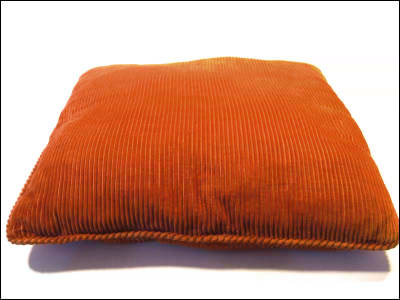What is the result of a one-year analysis of 'Which clothes do you wear and how often? What is the price per wear?'
When I bought expensive clothes and shoes, I convinced myself that 'It's certainly expensive, but if you wear it many times, the price per item will be cheaper ...', but in reality, you didn't wear it that much. Some people should have experience. Andre Nader, author of personal investment and FIRE articles, fully tracks 'what clothes you wore and how many times' and 'what is the price per wear' over the course of a year. The result of the investment is open to the public.
Tracking Everything I Wore For 1 Year
One day, Nader began to worry about 'I don't know how many times I wore a particular shirt' for some reason, so I took the plunge and how often and how often I wore all my clothes and shoes1 I decided to track the cost per round.
Of course, Mr. Nader's clothes and shoes do not have a function to automatically count the number of times they are worn. Therefore, Mr. Nader devised a mechanism to sew NFC (Near Field Communication) tags on all clothes and automatically read the tags using smartphone shortcuts. NFC is a technology used for cashless payments on smartphones, and in recent years almost all smartphones are equipped with NFC scanners.
First, Mr. Nader searched the online shopping site Alibaba for NFC stickers and tags that can withstand washing and drying, and tested various products. As a result, it turned out that the NFC button worked well, so I ordered the NFC button in bulk.
Then I sewed an NFC tag on my clothes. Mr. Nader thought it would be strange if someone could see this button, but in 2021 when he investigated it, the pandemic of the new coronavirus infection (COVID-19) reduced the chances of going out, so it was mostly affected. There was no such thing.
Mr. Nader sets a unique ID for all the clothes he has, creates a clothes management system with the application development tool '
Mr. Nader, who built a system to automatically register clothes and shoes worn in this way, actually continued to collect data for a year. The 5 best times to wear it are as follows, and I wore the top
6th to 10th place is like this. Adidas tennis shoes, Patagonia jackets, Nike shorts, etc. are ranked in, and it can be seen that Mr. Nader is the type that he likes to move.
![]()
This survey reveals some interesting facts. The first is that 'there were quite a lot of clothes and shoes that I never wore in a year.' In the image below, the left is 'I donated because I didn't wear it once a year', and the right is 'I didn't wear it once a year but I kept it at hand'. Even though I didn't wear it even once, it's time to use dress shoes about once every few years, and the $ 200 denim is a waste, so keep it handy. It seems that it was made.
San Francisco, where Mr. Nader lives, has a stable climate, so he wore some kind of shirt all year round. The ranking of the number of times the shirt is worn is as follows.
Looking at the graph below, which plots the number of times you wear each shirt size, you can see that the 'M' size clothes indicated by the orange inverted triangles are overwhelmingly worn. It seems that this is because Mr. Nader changed his lifestyle and succeeded in weight loss in 2020, and the number of clothes of large sizes such as L and XL has decreased considerably.
The ranking of the number of times pants are worn is like this. In addition,
Looking at the graph below, which shows the change in the number of times pants are worn each month, the number of times sweat pants (light blue) are worn increases from December to May, which is relatively cool, and the number of times athletic shorts (green) are worn increases when it gets hot. You can see the trend.
Based on these analysis results, Mr. Nader said he chose clothes to buy for Christmas 2021. Nader reports that he thought he should buy expensive but good quality clothing, and bought medium-sized T-shirts from Everlane and Buck Mason , Vuori sweatpants, athletic pants, and jogger pants. Did.
Related Posts:
in Design, Posted by log1h_ik







